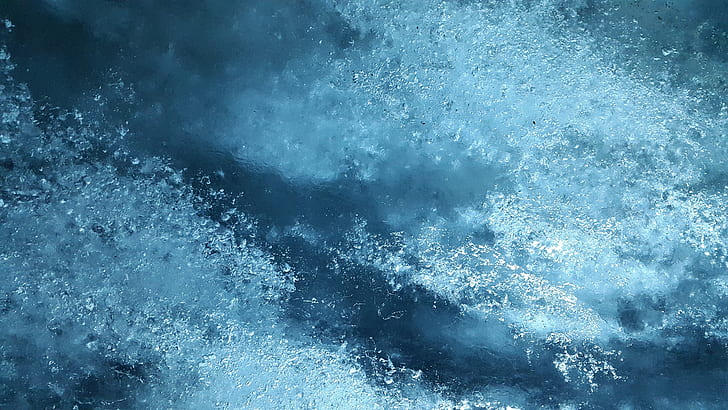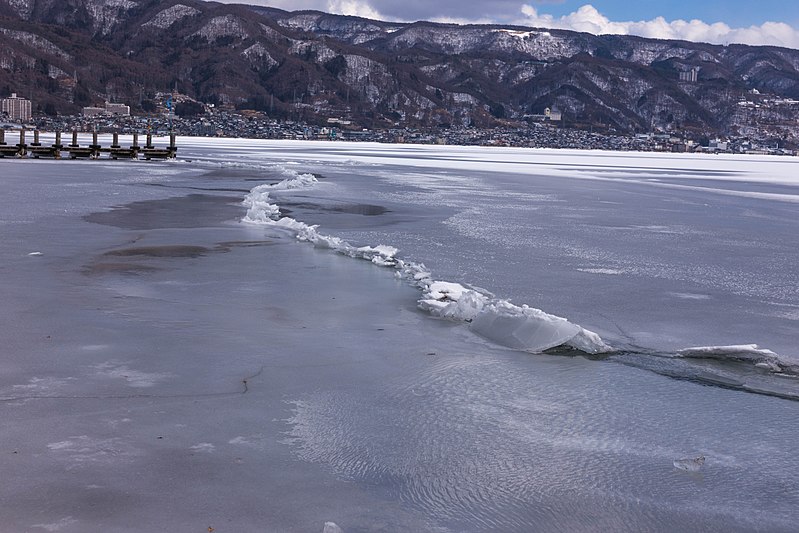An article written in the ScienceDaily explores recent concerning data: due to climate change, lakes in the Northern Hemisphere are experiencing “more ice-free years.” You may be wondering—well, why does the amount of ice on a lake matter? The dwindling ice on our Earth’s lakes is not only a wake up call for our climate sensitive present and future, but also an indication of the detrimental ecological, cultural, and economic impacts of climate change.
I used to take ice for granted; now I understand why it is truly a unique thing. Water is one of the only substances that is less dense as a solid than as a liquid. This phenomenon is due to its hydrogen bonding. As temperatures fall below 4 degrees celsius, water molecules move too slowly to break these hydrogen bonds. As a result, the molecules are able to form a crystalline lattice, making the most amount of hydrogen bonds possible, 4. This property is crucial for life under ice to exist on earth, and therefore, crucial to the balance of all life on earth. Now, with a changing climate, ice is at risk.
In a recent study, researchers analyzed 80 years of lake ice data from 1939-2016. Focusing on 122 lakes that have historically froze every winter, the researchers concluded that ice-free years for these lakes were 3 times more frequent since 1978. This trend is highly correlated with abnormally warm winters, and it will continue to increase as the earth warms at higher rates.
The absence of ice on these lakes has various implications. Communities around the lakes that have traditionally depended on lake ice for ice fishing and ice festivals during the winter are paying the consequences. In addition to economic and cultural impacts, there are also ecological implications. The lakes are warmer in years without ice, and, as a result, they stratify earlier. The formation of distinct thermal layers increases the lake’s susceptibility to toxic algal blooms, which can be harmful to marine life and to people.
The authors noticed that this warming trend was not unique to a specific location of lakes, but rather, applicable to a broader region of Earth’s lakes. In a new study, researcher Filazzola and his colleagues looked through a broader geological lens to understand how the frequency of ice-free lakes has changed over time. They gathered consistent historical and modern data from the National Snow and Ice Data Center (NSIDC) for 122 lakes in North America, Europe, and Asia. Some of the oldest data collected was from 1443 about Lake Suwa, located in Japan. At this historic lake, the researchers collected impressive documentation from 15 generations of priests, who have always regarded the lake’s ice with “celebration.” Again, this demonstrates the cultural significance that lake ice holds in many communities.
Overall, Filazzola and his colleagues concluded that there is a correlation between air temperatures/climate cycles and increasingly “ice-free years,” which they defined as a lake not having “100%” of ice coverage “for at least one day.” Their data clearly demonstrated that lake warming is more prevalent in the last 40 years than in the last 80 years. One of the researchers, Sharma, even called the growing absence of ice as “not normal” and “a historical snapshot to understand that the climate is changing.”
As a 17 year old in today’s world, I feel very strongly about earth’s changing climate and its negative effects for our future. While the subject has become politicized in the United States due to certain industrialist economic beliefs, our changing climate is indeed pressing and sensitive. It is our duty as stewards to protect the planet and to moderate its changing climate.





Leave a Reply